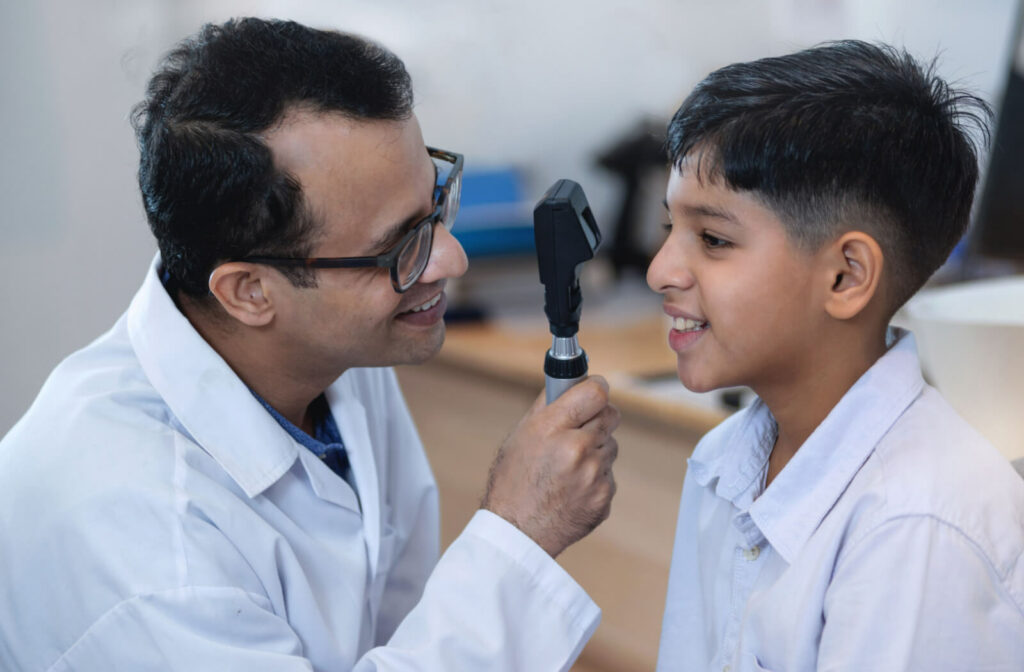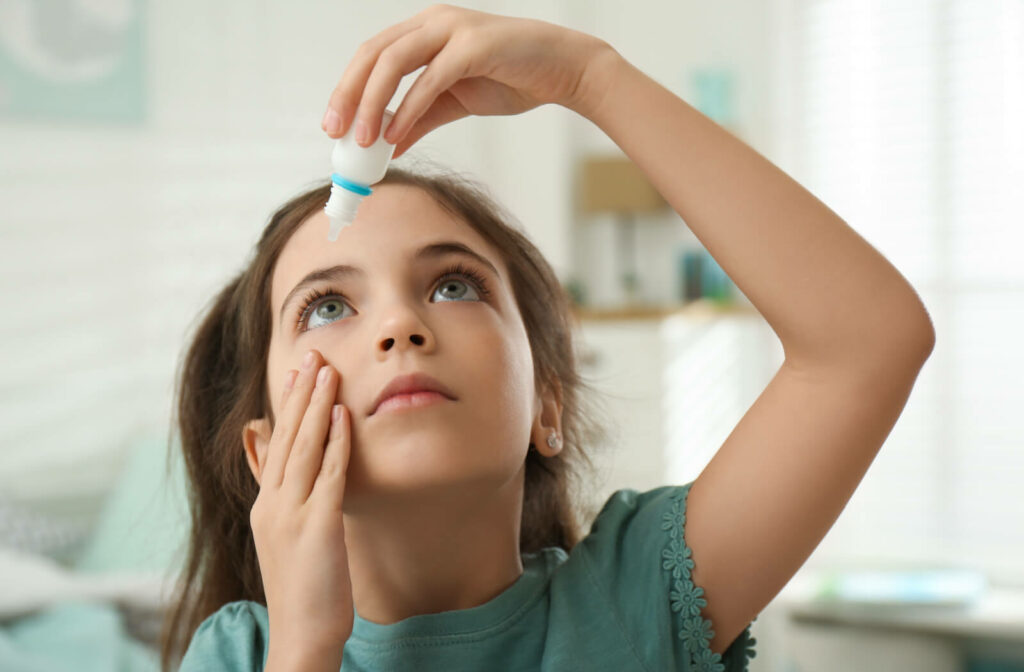Nearsightedness, clinically known as myopia, is an extremely common eye condition. It makes nearby objects appear clear while distant objects are blurry. And unfortunately, it’s not a fixed issue, and it tends to get worse over time. Many people find themselves wondering if it’s possible to slow myopia progression, and how to do so.
Atropine eye drops can be an excellent way to slow myopia progression. They temporarily relax certain muscles in the eye, which can slow eye growth and myopia progression. This is just one of many options for myopia control in kids.
What Is Myopia?
Myopia is a common refractive error, meaning that it’s a problem with how the eye refracts light. It happens when the eye grows too long front-to-back or the cornea becomes too curved. Instead of refracting light properly to focus on the retina, myopia causes light to focus in front of the retina. This causes distant objects to appear out of focus while nearby objects are clear. Because of this, it’s often called nearsightedness.
Myopia typically begins developing when you’re young and progresses further until early adulthood. Over this time, the eye keeps developing, and vision typically gets worse before stabilizing around the ages of 18–20.
Myopia can cause additional symptoms, like:
- Eye strain
- Blurry vision
- Headaches
Myopia affects millions of children, and the number is expected to grow significantly over the next few decades. Fortunately, there may be a solution: myopia control.
What Is Myopia Control?
When an optometrist talks about myopia control, they’re referring to a group of specific treatments aiming to control myopia progression in children. While there is no cure, there are several methods that can reduce how quickly it progresses, which can preserve more of your child’s vision in the long term.
There’s a reason that they focus on children when it comes to myopia control. Once you reach late adolescence or early adulthood, your eyes usually stabilize and stop growing or changing shape. So your myopia won’t progress any further.
But for kids whose eyes are still growing, slowing down that growth can mean preventing high levels of myopia. Typically, myopia control uses one of the following methods:
- Orthokeratology (ortho-k), in which special contact lenses are worn overnight. They temporarily reshape the cornea to properly refract light. The lenses are removed in the morning and your child can see without vision correction. This correction is temporary, and without regular use, their eyes will revert to their normal shape.
- Peripheral defocus contact lenses, where specialty lenses are worn during the day. They correct myopia using multiple areas of focus in each lens, but need to be worn regularly for ideal results.
And if you want a simple approach to myopia control? You can try atropine eye drops. While these don’t correct vision, they can be effective in helping slow myopia progression.
What Are Atropine Eye Drops?
Atropine is a specific alkaloid that has been used in medicine for many years. It affects several different parts of the body depending on how it’s used. It can come in different concentrations, and the higher the concentration, the more severe of an effect it has.
In small doses—around 0.01%—it helps to dilate the pupils with minimal side effects. Optometrists have used atropine for years as eye drops to help them see inside the eye during eye exams, and many have used it as a form of myopia control.
When used regularly and in line with an optometrist’s recommendations, this can temporarily relax the focusing mechanism in the eye. Over time, this can help to slow how much the eye elongates—so your child’s myopia may progress less. Atropine eye drops can also be combined with other myopia control methods for more significant results.
Is Atropine Safe to Use?
Atropine eye drops are completely safe to use. However, it does depend on the dosage you’re using. For quite some time, people were using a concentration of more than 1% atropine. This led to light sensitivity, dry eyes, and other vision issues. But now that optometrists only use concentrations of around 0.01%–0.05%, these side effects are almost nonexistent.
While low-dose atropine is safe for children, they may experience minor side effects, like:
- Mild irritation or stinging sensation upon application
- Minimal blurriness immediately after application, which typically resolves soon
- Minor light sensitivity
All of these side effects go away extremely quickly. However, if your child has any lingering side effects, visit your optometrist to determine if your child’s eyes are particularly sensitive to atropine.

Should My Child Try Atropine Eye Drops?
If your child has myopia, atropine eye drops may help slow the progression of this common condition. Visit us at Pack & Bianes Optometry Tierra Nova for an appointment. Our team can perform a children’s eye exam and help determine what type of myopia control can be helpful. Book an appointment online today!



